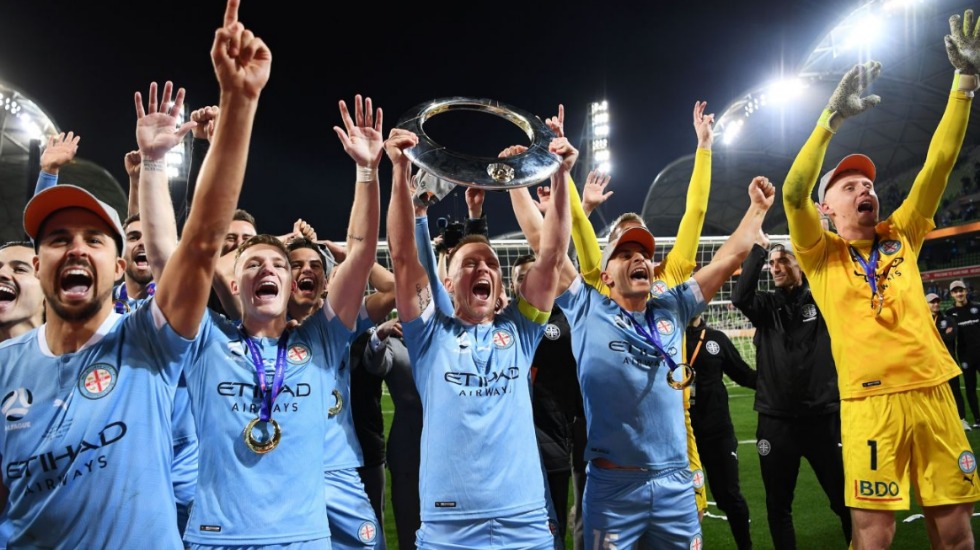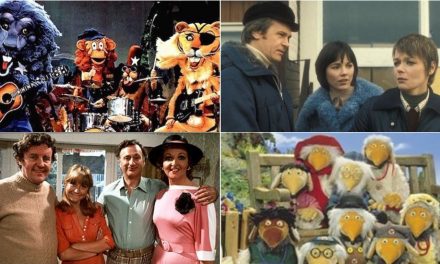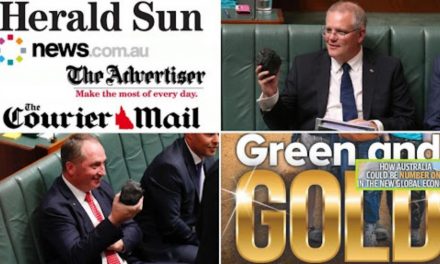A jubilant Melbourne City celebrate their A-League grand final victory last season. Photo: Getty Images
Cartoonist Charles Schulz, creator of the comic strip Peanuts, once said that “there is no heavier burden than unfulfilled potential”.
People have been talking about football’s unfulfilled potential in Australia for decades. Nearly 150 years since the first officially recorded game in Goodna, are we any closer to awakening the sleeping giant?
Crowds for the domestic leagues remain mediocre, although in mitigation, the pandemic has hit sporting crowds in general. The opening three games of the Big Bash League for example, drew only 25,000 collectively, while the 2021 AFL season saw an average crowd of just over 19,000, as opposed to 36,000 in 2019, the last pre-pandemic campaign.
To date, 178,409 fans have attended 24 matches in the A-League Men’s competition – an average of 7434. This is actually up on last season’s overall average of 5745, but remains well short of the league’s heyday back in 2007-08, when an average of 14,610 offered the tantalising prospect of that potential – finally – being fulfilled.
A lot has happened since of course – on and off the pitch – as the cycle of boom and bust that has characterised the game’s history in Australia has continued to play out.
Yet every so often, there’s a reminder of that potential – when the stars momentarily align, and the game emerges from its ugly duckling persona into something more aesthetically pleasing.
The Sydney derby in Round 1 and the Matildas’ recent series against Brazil and the USA were a few such moments, as was Saturday’s “Original Rivalry” encounter between Adelaide United and Melbourne Victory.
Two teams with genuine enmity playing fast-paced attacking football, a noisy home crowd competing with a packed away bay at a perfectly-sized stadium, all on a balmy night, and a decent playing surface – these are the ingredients that make football intoxicating.
It’s that potential that Silver Lake, the American private investment group, bought into this week – reportedly to the tune of around $US 100 million ($A 140.5 million) up front for a 33.33 per cent stake.
On the face of it, it’s a big win for the game. But what’s in it for the money men? Danny Townsend, CEO of the APL (the umbrella group of clubs that now controls the A-Leagues, after a protracted battle for control with Football Australia), explains.
“They have a ‘long-term horizon’ on the deal,” he says.
“Funds have a term where they expect to crystalise a return on their investment, at which point they will look to exit and liquidate their asset.
“This horizon is for a minimum of eight years. At the end of the eighth year, they will be looking to transact out. They can do that through a trade sale, or we could buy back, or they could list it.
“Their worst-case scenario is to double their money. They want to see us turn into a billion-dollar enterprise. We are currently valued at $425m.”
Critics may scoff at the notion of the A-League turning those sorts of numbers in its current guise, but Townsend insists there is a strategy in place.
“We have built a financial model, and our target will be to try and execute,” he says.
“Silver Lake tested that model in the due diligence process through the market data. The biggest thing they saw in us is that we are going direct to the consumer.
“If you think of the range of products they have, it makes sense. They have UFC, which in sports terms, is probably the benchmark in that category.
“They also invested in Peloton, the digital exercise bike that has been the most successful direct-to-consumer digital business.”
Yet financial windfalls don’t always lead to sustained growth – which is why the game must spend the cash wisely.
PLEASE HELP US CONTINUE TO THRIVE BY BECOMING AN OFFICIAL FOOTYOLOGY PATRON. JUST CLICK THIS LINK.
Football in Australia has many hungry mouths, a chronic shortage of cash, and many opinions as to where it should be spent. Already, former Socceroo, Robbie Slater, has called for a “marquee fund” to bring in overseas stars to give the competition some extra buzz.
“We could blow through it very quickly on marquees,” Townsend says.
“If we gave each club $5 million for marquees, then that’s $60 million gone already.
“We will invest in our digital platform, Keep Up. We’ll add more content, but also more functionality. The platform right now is pure content – there’s no e-commerce, you can’t buy tickets directly, there’s no community tool that we are currently building to provide coaching education, for example.
“There are so many things we have in the pipeline. We have an ambition to unify the game on this platform.”
Talk of unification inevitably leads to the elephant in the room – the long-awaited National Second Division and, ultimately, a connected pyramid based upon global practice, involving promotion and relegation. Townsend is in favour, but cautious.
“Anyone who doesn’t have ambition for us to have promotion and relegation doesn’t have the right ambition for the game,” he says.
“But only when it’s financially sustainable – at the moment, it’s not the right time. But this is why we are deploying this capital, to grow the game.
“But it needs to be on the roadmap, some of the most compelling games are about promotion and relegation.”
The setting up of the second-tier competition will be done – if at all – through Football Australia, not the APL, in any case.
As part of the Silver Lake deal, the governing body (as the A-Leagues regulator), receives a slice of the cash – a financial “carry-share” which entitles them to five percent of the capital raise.
It is believed some of that money will be put towards the establishment of the second tier, with a mooted start date of 2023, and potentially a national Cup competition for women.
But where else will the money go?
“There’ll be investment into the A-League Men’s, Women’s and Youth competitions, into community programs, and there’s infrastructure investments,” Townsend says.
“I want to ensure our stadiums are fit for purpose, and to improve the TV experience for punters on the couch.
“There are lots of things to do. We are also looking at diversified investments – are there parts of football we could acquire that could deliver a return?
“We have profile, we have money, and can build scale. The more money APL makes, the more goes back into the game.”
With the new TV deal with Viacom CBS in place, and now Silver Lake’s entry into the sport, football in Australia has never been richer. Once again, there is talk of fulfilling potential, of awakening the giant.
Seasoned football-watchers might roll their eyes and mutter “good grief” in the manner of Charles Schulz’s famous character, Charlie Brown – the game has had too many false dawns down the years. Will this be any different? Townsend believes so.
“Silver Lake believes in our strategy. They also know the game very well,” he says.
“They have invested in football before, and they know you can make money out of it. They also know we are at the bottom of our cycle.
“Tech buys at the bottom and sells at the top, and they see our game has a huge upside.”
For the sake of generations of fans who have seen and heard it all before, let’s hope he’s right. That burden has been heavy to wear for far too long.











